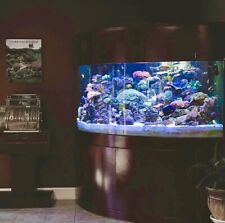A Swim a Day Keeps the Vet Away

While all dogs benefit from the cardiovascular exercise of swimming, older dogs may gain the most. "It’s one of the best nonweight-bearing exercises," says Robert Taylor, DVM of Denver, Colorado. Taylor, who is a director for the American Canine Sports Medicine Association and a veterinarian on the Animal Planet TV show Emergency Vets, suggests that a daily swim might even be a substitute for pain relief medications for dogs with chronic conditions. (He recommends talking with your vet before beginning a swimming program in which the goal is to wean a dog off pain relief medicine.)
Exercise is also an outlet for excess energy or stress. Without that kind of appropriate outlet, behavior problems might arise. Of course, a good swim isn’t the answer to all of life’s troubles. Or is it? People report a feeling of euphoria when they are swimming. David Levine of Chattanooga, Tennessee, is a physical therapist for people. He has a Masters Degree in orthopedics and a PhD in physiology, and he now works on rehabilitation medicine for dogs. He explains that when people are in a pool, their brains release endorphins, naturally occurring chemicals that help them feel good. Levine sees no reason why the same wouldn’t be true of dogs.
In fact, the euphoria might be even greater in dogs, since many were quite literally born to swim. Portuguese Water Dogs, Irish Water Spaniels, Poodles, many of the retrievers and, of course, Newfoundlands, are among the dogs who are often impossible to keep out of the water. Owners of these breeds report their dogs can sense a body of water a mile away. Some breeders of Portuguese Water Dogs and Newfies won’t sell dogs to people who don’t promise to regularly give their dogs a swim.
There are legendary stories of Newfoundlands saving the lives of children who wind up in trouble in the backyard pool. And while the family pool might seem perfect for a large, water-loving dog, each year there are reports of dogs that also end up in trouble and drown in the family pool. When swimming in a pool for the first time, it’s imperative that the dog understands how to exit-and that the dog is supervised. A dog that doesn’t understand how to leave a swimming pool will be doomed if there’s no human to help. Not even a Newfoundland can swim forever.
It’s also a myth that all dogs know how to swim. If most Pugs, Pekinese or Boston Terriers dive into a pool, they sink like a rock. While some dogs that can’t swim understand their limitations and stay far away from the water’s edge, others live in denial and still jump right in. Smaller dogs who love the water can use a child’s wading pool, where they’re not in over their heads. And certainly, dogs that are dog paddle-deficient should be carefully supervised by adults around the pool and should wear a life jacket (either one made for small children, or even better a life jacket specifically made for canines). A life jacket is also recommended to give dogs unsure of their abilities in the water some confidence. Even elderly dogs that were once as proficient in the water as a sea lion might now need the support of a life jacket, as well.
Of course, dogs generally don’t swim laps. Their motivation to keep swimming can be a Frisbee disc or another toy that you toss into the pool for the pooch to retrieve. Sometimes, you’re the motivation; the dog likes the water fine, but won’t swim alone. It’s a chance for you to get some exercise, too.
There’s only one downside of your dog using the family pool: Dogs don’t dry themselves off with a towel. They prefer to sneak into the house after a swim, shake off the excess water in the living room, then proceed to your bed to take a nap.













